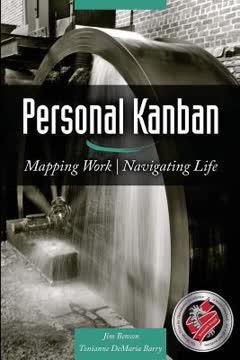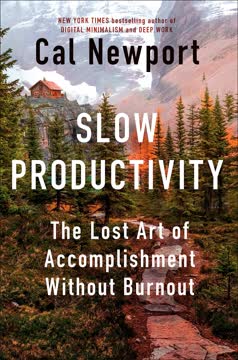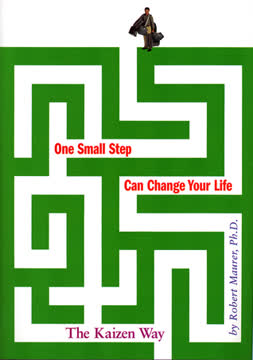Key Takeaways
1. Action is the antidote to despair and the key to mental health
"Action is the antidote to despair."
Taking action heals. When we take action, we reduce anxiety, depression, and interpersonal conflicts. Action builds trust, increases self-esteem, and helps us achieve our goals. It's not about becoming a workaholic, but about responding appropriately to the needs of each situation. By doing what needs to be done, we find our place in the interdependent web of life and create ripples that reverberate throughout the universe.
Action is transformative. It allows us to:
- Reduce stress and anxiety
- Accomplish meaningful goals
- Build stronger relationships
- Increase productivity
- Develop a sense of purpose and fulfillment
By taking action, we become active participants in our lives rather than passive observers. This shift in perspective can dramatically improve our mental health and overall well-being.
2. Overcome procrastination by focusing on purpose, not feelings
"To merely want to do something is not enough."
Purpose trumps feelings. Procrastination often stems from making decisions based on how we feel in the moment. To overcome this, we must shift from a feeling-centered approach to a purpose-centered one. The key question becomes "What needs to be done?" rather than "What do I feel like doing?"
Strategies to overcome procrastination:
- Clearly define your purpose and goals
- Break tasks into smaller, manageable steps
- Set deadlines and create accountability
- Practice self-discipline and develop habits
- Focus on the benefits of completing the task
By aligning our actions with our purpose, we can move forward even when we don't feel like it. This approach allows us to coexist with our feelings while still taking appropriate action, leading to greater productivity and satisfaction in our lives.
3. Small steps create momentum and lead to significant progress
"It does not matter how slowly you go, as long as you do not stop."
Embrace incremental progress. Small steps are powerful because they create momentum. By taking tiny actions consistently, we can overcome inertia and build habits that lead to significant change over time. This approach, known as Kaizen, focuses on continuous improvement through small, manageable steps.
Benefits of small steps:
- Reduce resistance and procrastination
- Build confidence through consistent progress
- Create sustainable habits
- Overcome overwhelm by breaking tasks into manageable chunks
- Allow for flexibility and adaptation as you progress
Remember that even seemingly insignificant actions can create ripples of change. By focusing on small, consistent steps, we can achieve remarkable results and transform our lives over time.
4. Acceptance is at the heart of effective action
"Accept your thoughts and feelings."
Embrace reality as it is. Acceptance doesn't mean resignation or giving up. Instead, it's about acknowledging the present moment without resistance, including our thoughts, feelings, and external circumstances. This acceptance allows us to respond more effectively to life's challenges.
Key aspects of acceptance:
- Recognize the uncontrollable nature of thoughts and feelings
- Coexist with difficult emotions rather than trying to eliminate them
- Focus on what can be controlled: our actions and responses
- Practice mindfulness to cultivate present-moment awareness
- Let go of attachments to specific outcomes
By accepting things as they are, we free up energy that would otherwise be spent on resistance. This enables us to take more effective action and respond skillfully to the needs of each situation.
5. Coexist with fear and uncertainty to move forward
"Fearlessness is not freedom from fear or having less fear. It is 'going beyond' fear."
Embrace discomfort. Fear and uncertainty are natural parts of life, especially when pursuing meaningful goals. Instead of trying to eliminate these feelings, learn to coexist with them. This allows you to take action despite feeling afraid or unsure.
Strategies for coexisting with fear and uncertainty:
- Acknowledge and accept the presence of fear
- Recognize that fear can provide valuable information and energy
- Focus on your purpose and values rather than your feelings
- Take small steps to build confidence and momentum
- Practice self-compassion and patience as you face challenges
By developing the ability to act in the presence of fear and uncertainty, you expand your capacity for growth and achievement. Remember that courage is not the absence of fear, but the willingness to move forward despite it.
6. Cultivate self-reflection to guide purposeful action
"Reflection + Risk = Contribution"
Understand yourself deeply. Self-reflection helps us gain clarity about our values, goals, and the impact of our actions on others. Through practices like Naikan, we can develop a greater sense of gratitude and purpose, which in turn guides our actions more effectively.
Benefits of self-reflection:
- Increased self-awareness and emotional intelligence
- Better decision-making aligned with personal values
- Enhanced relationships through understanding our impact on others
- Greater clarity about life purpose and direction
- Improved ability to learn from experiences and adapt
Regular self-reflection allows us to step back from the busyness of life and gain perspective. This practice helps us make more intentional choices and take actions that are truly meaningful and impactful.
7. Embrace impermanence and adapt to constant change
"Impermanence is the essence of everything."
Change is inevitable. Recognizing the impermanent nature of all things can help us navigate life's challenges more effectively. Instead of resisting change, we can learn to adapt and respond skillfully to new situations as they arise.
Ways to embrace impermanence:
- Cultivate flexibility in your thinking and actions
- Practice letting go of attachments to specific outcomes
- Focus on the present moment rather than clinging to the past or future
- View challenges as opportunities for growth and learning
- Develop resilience by accepting that change is a natural part of life
By embracing impermanence, we can reduce suffering caused by resistance to change. This mindset allows us to flow with life's currents more gracefully and respond more effectively to the ever-changing needs of each situation.
8. Practice compassionate action to enrich relationships and society
"Real action is meant to comfort others, meant to demonstrate love and concern."
Extend kindness outward. Compassionate action involves taking concrete steps to help others and improve the world around us. By focusing on the needs of others, we can often alleviate our own suffering and find greater meaning in life.
Ways to practice compassionate action:
- Actively listen and respond to the needs of others
- Perform small acts of kindness daily
- Volunteer for causes you care about
- Offer support to friends and family in times of need
- Work towards positive change in your community
Compassionate action not only benefits others but also enriches our own lives. By extending ourselves in service to others, we cultivate deeper connections, find greater purpose, and contribute to creating a more caring and supportive society.
Last updated:
FAQ
What's "The Art of Taking Action" about?
- Focus on Action: "The Art of Taking Action" by Gregg Krech emphasizes the importance of taking action in life, drawing from Japanese psychology to guide readers in overcoming obstacles to action.
- Japanese Wisdom: The book integrates Japanese psychological principles, such as Morita Therapy, Kaizen, and Naikan, to help readers understand and implement effective action-taking strategies.
- Practical Guidance: It offers a practical approach to living a purposeful life, addressing common challenges like procrastination, fear, and indecision.
- Character Development: The book focuses on character development over symptom reduction, encouraging readers to live meaningfully despite limitations and problems.
Why should I read "The Art of Taking Action"?
- Overcome Inaction: If you struggle with procrastination or indecision, this book provides tools and insights to help you take meaningful action.
- Cultural Insights: It introduces Eastern psychological concepts to a Western audience, offering a fresh perspective on personal development.
- Practical Application: The book is filled with practical advice and real-life examples, making it easy to apply the concepts to your own life.
- Inspiration and Motivation: It inspires readers to pursue their dreams and passions, emphasizing the importance of taking risks and living purposefully.
What are the key takeaways of "The Art of Taking Action"?
- Acceptance and Action: Accept your thoughts and feelings without trying to change them, and focus on taking action despite them.
- Small Steps Matter: Embrace the concept of Kaizen, which emphasizes continuous improvement through small, incremental steps.
- Purpose Over Feelings: Make decisions based on purpose rather than feelings, and learn to coexist with discomfort.
- Self-Reflection: Use Naikan self-reflection to gain insights into your relationships and actions, fostering gratitude and responsibility.
How does "The Art of Taking Action" incorporate Japanese psychology?
- Morita Therapy: Focuses on accepting feelings and taking action regardless of them, emphasizing the uncontrollable nature of thoughts and emotions.
- Kaizen: Encourages continuous improvement through small, manageable steps, making change more achievable and less daunting.
- Naikan: A method of self-reflection that involves considering what you have received, given, and the troubles you have caused others, promoting gratitude and awareness.
- Integration: The book combines these methods to provide a comprehensive approach to taking action and living purposefully.
What is Morita Therapy, and how is it applied in "The Art of Taking Action"?
- Acceptance: Morita Therapy teaches acceptance of thoughts and feelings without trying to change them, focusing instead on taking action.
- Action Over Feelings: It emphasizes that action should not be dictated by feelings, encouraging individuals to act according to their purpose.
- Non-Resistance: The therapy promotes non-resistance to emotional experiences, allowing individuals to move forward with their lives.
- Practical Application: The book uses Morita Therapy to help readers understand how to take action despite anxiety, fear, or depression.
What is Kaizen, and how does it relate to personal change in "The Art of Taking Action"?
- Continuous Improvement: Kaizen is about making small, incremental changes over time, leading to significant improvements.
- Manageable Steps: It encourages breaking down tasks into manageable steps, reducing resistance and making progress more achievable.
- Momentum: Small actions create momentum, making it easier to continue taking action and achieve goals.
- Personal Application: The book applies Kaizen to personal development, helping readers implement change in a sustainable way.
How does Naikan self-reflection contribute to taking action in "The Art of Taking Action"?
- Three Questions: Naikan involves reflecting on what you have received, given, and the troubles you have caused, fostering gratitude and responsibility.
- Awareness and Insight: This reflection provides insights into your relationships and actions, helping you understand your impact on others.
- Motivation for Action: By recognizing the support you receive, Naikan can motivate you to take action to repay or acknowledge that support.
- Practical Use: The book uses Naikan to encourage readers to reflect on their lives and take meaningful action based on those reflections.
What are some of the best quotes from "The Art of Taking Action" and what do they mean?
- "Action is the antidote to despair." – This quote emphasizes that taking action can alleviate feelings of hopelessness and depression.
- "A journey of a thousand miles begins with the first step." – It highlights the importance of starting with small steps to achieve significant goals.
- "Hold the sadness and pain of samsara in your heart and at the same time the power and vision of the Great Eastern Sun." – This suggests balancing awareness of suffering with a positive vision for the future.
- "Proceed as the path opens." – Encourages taking action as opportunities arise, without waiting for perfect conditions.
How does "The Art of Taking Action" address procrastination?
- Understanding Procrastination: The book explains that procrastination often stems from a focus on feelings rather than purpose.
- Action Despite Feelings: It encourages taking action even when you don't feel like it, emphasizing the importance of purpose-driven decisions.
- Small Steps: By taking small, manageable steps, you can overcome the inertia of procrastination and build momentum.
- Practical Strategies: The book offers practical strategies, such as showing up physically and starting before you're ready, to combat procrastination.
How does "The Art of Taking Action" suggest dealing with fear?
- Coexist with Fear: The book advises learning to coexist with fear rather than trying to eliminate it, allowing you to take action despite it.
- Fear as Energy: Fear can be a source of energy that propels you to take necessary action, rather than a barrier.
- Acceptance: Accept fear as a natural part of the process, and focus on your purpose to move forward.
- Practical Examples: The book provides examples of individuals who have successfully taken action despite fear, illustrating the concept in practice.
What role does self-discipline play in "The Art of Taking Action"?
- Purpose Over Feelings: Self-discipline involves making decisions based on purpose rather than feelings, allowing you to take consistent action.
- Building Habits: The book emphasizes the importance of building habits through small, consistent actions, which require self-discipline.
- Overcoming Resistance: Self-discipline helps you overcome resistance and procrastination, enabling you to achieve your goals.
- Practical Application: The book provides practical advice on developing self-discipline, such as setting clear priorities and taking small steps.
How does "The Art of Taking Action" encourage living a purposeful life?
- Clarifying Purpose: The book encourages readers to clarify their purpose and align their actions with it, leading to a more meaningful life.
- Action-Oriented: It emphasizes the importance of taking action to fulfill your purpose, rather than just thinking or talking about it.
- Balancing Reflection and Action: The book suggests balancing self-reflection with action, using insights from Naikan to guide purposeful living.
- Overcoming Obstacles: By addressing common obstacles like fear, procrastination, and indecision, the book helps readers live purposefully despite challenges.
Review Summary
The Art of Taking Action is praised for its practical approach to overcoming procrastination and taking meaningful action. Many readers found it insightful and life-changing, appreciating its blend of Eastern philosophy and actionable advice. The book emphasizes the importance of purpose-driven decisions, gratitude, and embracing discomfort. Some readers felt certain sections were less cohesive or too simplistic. Overall, reviewers recommend it as a valuable resource for personal growth, though a few found it lacking depth or originality.
Similar Books






Download PDF
Download EPUB
.epub digital book format is ideal for reading ebooks on phones, tablets, and e-readers.




